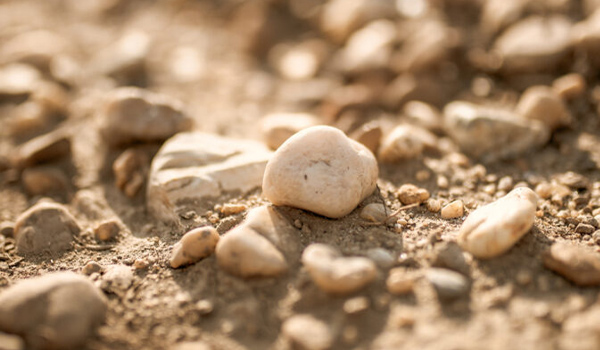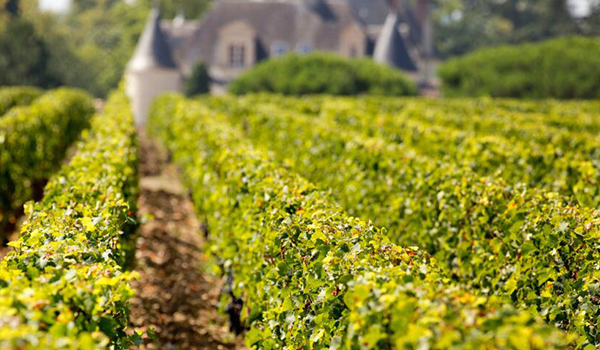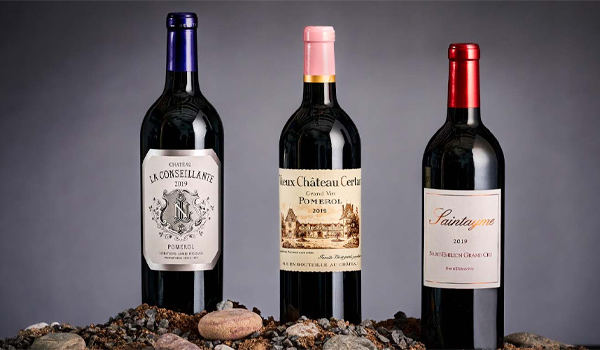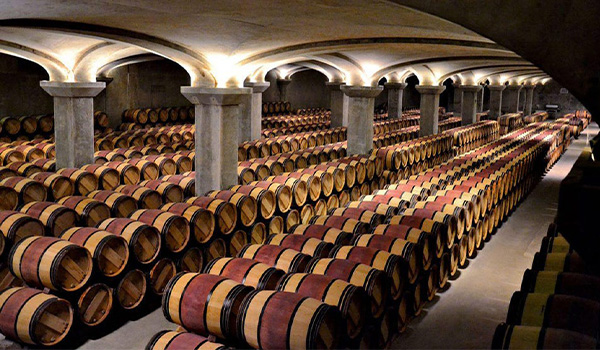Château Haut-Brion – The Grand Vin of Graves
Ned Goodwin MW takes a look at what makes Château Haut-Brion his most revered Bordeaux producer…
No Bordeaux impresses me as resolutely, nor as frequently, as Château Haut-Brion. When asked my favourite Bordeaux, I don’t think twice before answering. Yet while of a certain majesty within its walled confines, Haut-Brion is the only one of the five Premier Grands Cru Classés that sits well outside the aristocratic strip of the Médoc. The property lies inauspiciously within the Bordeaux suburbs, just five-kilometres from the city centre and well inside the city’s A630 Rocade ring road. Indeed, if travelling from the city’s mercantile centre as most wine tourists do, one passes through unremarkable neighbourhoods of unsightly strip malls and interminable roundabouts before arriving, finally, in the Graves.
It was because of this very proximity to Bordeaux’s urban hub and the heart of the wine trade that makes Haut-Brion the veritable First of the Firsts, in terms of both longevity and an historical confluence with buyers and sellers, well before the Classification of 1855. Prior, as with much of the region, the Romans laid claim to the land here, planting vines as a conduit of civilisation manifest as Burdigala, or Bordeaux as it is known today. Their vines flourished because Graves is both warmer and wetter than the Médoc further north. These factors, together with a myriad of soils including hallowed peyrosol gravel and quality arenosol sands, make the region among the earliest ripening in all of Bordeaux. Today the warmth is exacerbated by the thermal impact of the city and the Landes forest to the south-east, making Haut-Brion one of the earliest estates to pick. While the alcohols consistently nudge 14 per cent as a result, Bordeaux commentator extraordinaire, Jane Anson, suggests that irrespectively, ‘the balance, depth and sheer complexity of the flavours is astonishing. It is a wine that takes its time, as does all great Bordeaux, but displays incredible aromatic complexity as it ages…’

The hallowed peyrosol gravel
But let’s take a step back. Records indicate that vines existed nearby from as early as 1426. They were used to produce wine for a local chapel. Further documents indicate that wine was produced on an annual basis at the property of ‘Aubrion’ from 1521, a fulcrum point for the modern guise of the property. In 1533 Jean de Pontac then acquired the property, developing it into something resembling its current architecture from 1549 as construction of the château and its chais began. This makes Haut-Brion the oldest, continuously working winery in all of Bordeaux. Noteworthy, de Pontac's brother-in-law, Aranud de Lestonnac, acquired the original plot of La Mission Haut-Brion in 1540. This ensured that these sibling properties have been linked in some way for almost 500 years, a fertile period of inestimable impact on the way we perceive contemporary Bordeaux.
‘...Yet as is so often the case, it was Haut-Brion’s favour among the rich and powerful that proved the catalyst for its illustrious reputation....’
Many of these perceptions were cultivated at Haut-Brion. For example, the ‘New French Claret’, or the more finely tuned and ageable wines that define Bordeaux per se, is a paradigm founded on the more scientific approach to vinification and barrel ageing initiated at Haut-Brion, including pump-overs, the advocacy of stainless steel and the now-common practice of topping up the barrels to avoid oxidation and microbial spoilage. Moreover, Haut-Brion was the very first producer to associate its name with a singular plot of land, a leap that portended the sort of exploration of terroir on a more forensic scale that is de rigeueur today. Prior, to this wines from the region were simply sold as Bordeaux, or Graves, irrespective of their sub-regional or site-specific characteristics.
Yet as is so often the case, it was Haut-Brion’s favour among the rich and powerful that proved the catalyst for its illustrious reputation. It was the wine served to King Charles II upon his Restoration to the English throne in 1660, logged in the royal cellar book as ‘Hobrion’, with the missive that the bottles must be well filled. In 1663 Samuel Pepys wrote a tasting note: ‘…I drank a sort of French wine called Ho-Bryan that hath a good and most particular taste I never met with.” This was likely the first professional wine review! Moreover, in 1666 Haut-Brion opened up a tavern in England called The Pontac’s Tavern, with the express purpose of promoting and selling the château’s wine, a then-first. In 1787 Thomas Jefferson visited the property, too, noting the absence of the Médoc’s more common loams, replaced by Haut-Brion’s confluence of sand and gravels. Haut-Brion forever held a place in his heart.

Picture perfect Haut-Brion
The continuum of royalty and the well heeled is palpable even today, with ownership under the aegis of Domaine Clarence Dillon SAS, headed by Prince Robert of Luxembourg – the fourth generation of his family in the role since American financier Clarence Dillon bought Haut-Brion in 1935. The management team, too, stems from a long generational lineage. Jean-Philippe Delmas is deputy managing director, the third generation of his family to oversee the wine and estate management, intertwining the Delmas name with that of Haut-Brion for nearly a century. There is no outside consultant and the holistic circle is completed by the proprietary cooperage, on site, in partnership with Seguin Moreau.

Jean-Philippe Delmas, Deputy Managing Director
To disseminate Haut-Brion’s overseers in simple terms, the ownership passed from Clarence to Douglas in 1979, upon Clarence’s passing at the age of 96. It was then passed to Joan Dillon. Her first marriage to Prince Charles of Luxembourg bequeathed the royal title to today’s owner, Prince Robert. Robert became a full-time part of the management team of Domaine Clarence Dillon in June 1997. He was appointed managing director in 2002. When I last tasted at Haut-Brion over a long lunch, Robert proved as knowledgeable as he is flamboyant, cutting a dashing figure while rhapsodising about the qualities of the wines and hastening away moments of silence with poignant allegories.
The standard blend of Haut-Brion is comprised of slightly more Merlot (45-50 per cent) than Cabernet Sauvignon, with the reminder Cabernet Franc. Given the earlier ripening proclivity of the terroir, Petit Verdot is reserved for the warmest vintages. Subsequently the vineyard is divvied into plantings of 45.4 per cent Merlot, 43.9 per cent Cabernet Sauvignon, 9.7 per cent Cabernet Franc and 1 per cent Petit Verdot. Compared to its rivalrous peers in the Médoc, the geology is considerably more diverse, comprising an array of terroirs, each imparting an incisive textural rivet unto the greater weld. There is limestone, large gravels, deep clay, sandy gravels and more. The technical team has identified in excess of 16 different geological makeups. To maximise their potentialities, the late Jean-Berrnard Delmas institutionalised a successful vine cloning programme in 1974. He planted 10 clones of Cabernet Sauvignon and 11 of Cabernet Franc, supplementing these with a myriad of others, sourced from nurseries all over France. The Darwinian rise and fall of these original plantings, all in a dedicated two-hectare plot known as Bahans, established a lode of mother vines, suitably robust and synergistic with the terroir at hand. It is from these that Haut-Brion propagates its planting material across an average vine age of circa 36 years, with some nonagenarian vines in the fray. Planting densities are 8-10,000 vines per hectare.
There is nothing particularly unusual about the way the red is assembled. Fermentation is largely in stainless steel tanks, yet the assemblage of varieties and parcels is made after the malolactic conversion. The thinking is that this is best achieved before the influence of any oak on the wine. The blended wine is then aged for up to 24 months in new oak from the resident cooperage.
Three hectares of gravel over clay, too, are dedicated to white grapes. After all, the price of Haut-Brion Blanc far exceeds any other dry white of the region, while rivalling the price for the red. Indeed, it is one of the most expensive white wines in the world, imbued with a wondrous matrix of texture due to barrel fermentation in high quality oak. Sadly, there are only 600 cases made. The vineyard is planted to 58.5 per cent Semillon and 41.5 per cent Sauvignon Blanc. There is also a skerrick of Sauvignon Gris boding well, perhaps, in lieu of a warming climate.
Like elsewhere, the quantities produced of the Grand Vin have been decreased due to lower yields, more abstemious sorting in the vineyard and the advent of spectrometric sorting tables in the winery, facilitating a greater cull of second-rate fruit to be either used for the second wine, or sold off. Perhaps the greatest testament to Haut-Brion’s resolute grandeur, however, is the spectacular array of sumptuous old bottles. Unlike its peers, the château never really went into a slump due to internecine rivalries, avaricious ownership, economic downturn, or poorly applied viticulture or winemaking techniques. Auction pricing, on the inexorable increase, bears witness to Haut-Brion’s enviable and unrivalled track record.
The growing scarcity of the top wine is illustrated by these figures:
1982 – 21,600 cases
1989 – 17,093 cases
1990 – 18,088 cases
2009 – 11,000 cases
2010 – 8,094 cases
1982 – 21,600 cases
1989 – 17,093 cases
1990 – 18,088 cases
2009 – 11,000 cases
2010 – 8,094 cases
The finest recent vintages of Haut-Brion include 2021, 2020, 2019 2018, 2015, 2010, 2009 and 2008, to randomly select several across a swag of greats.
Further Reading
 Bordeaux 2019 Buying Guide
Bordeaux 2019 Buying Guide
Langton’s buying guide for The long-awaited 2019 Bordeaux Vintage.
Read More
 Bordeaux 2019 In Bottle
Bordeaux 2019 In Bottle
Let’s take a look at 2019, the bridge between the hedonism of 2018 and finer tuned classicism of 2020. In a nutshell, it is a very good year.
Read More
 Château Margaux –
Château Margaux –Up Close
Ned Goodwin MW delves into the compelling and lionised Château Margaux.
Read More